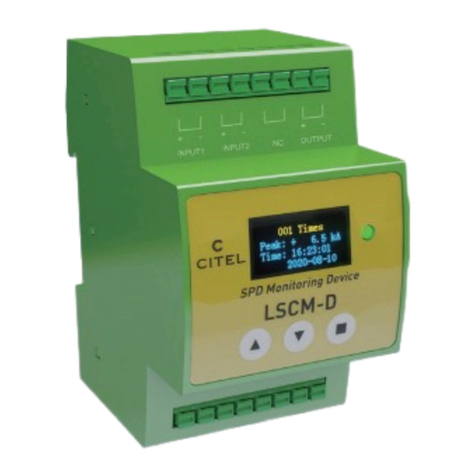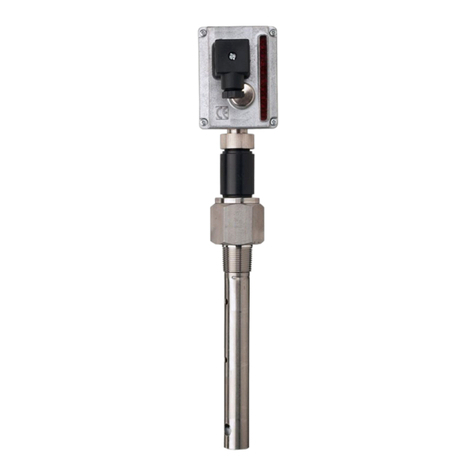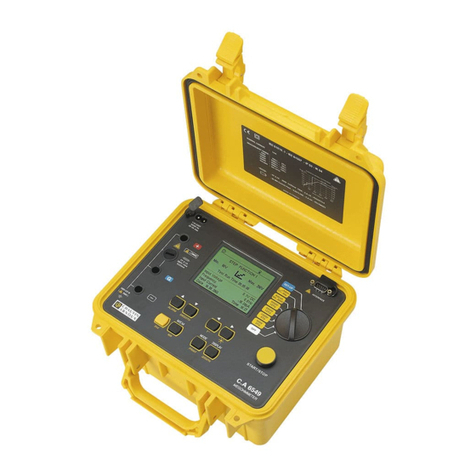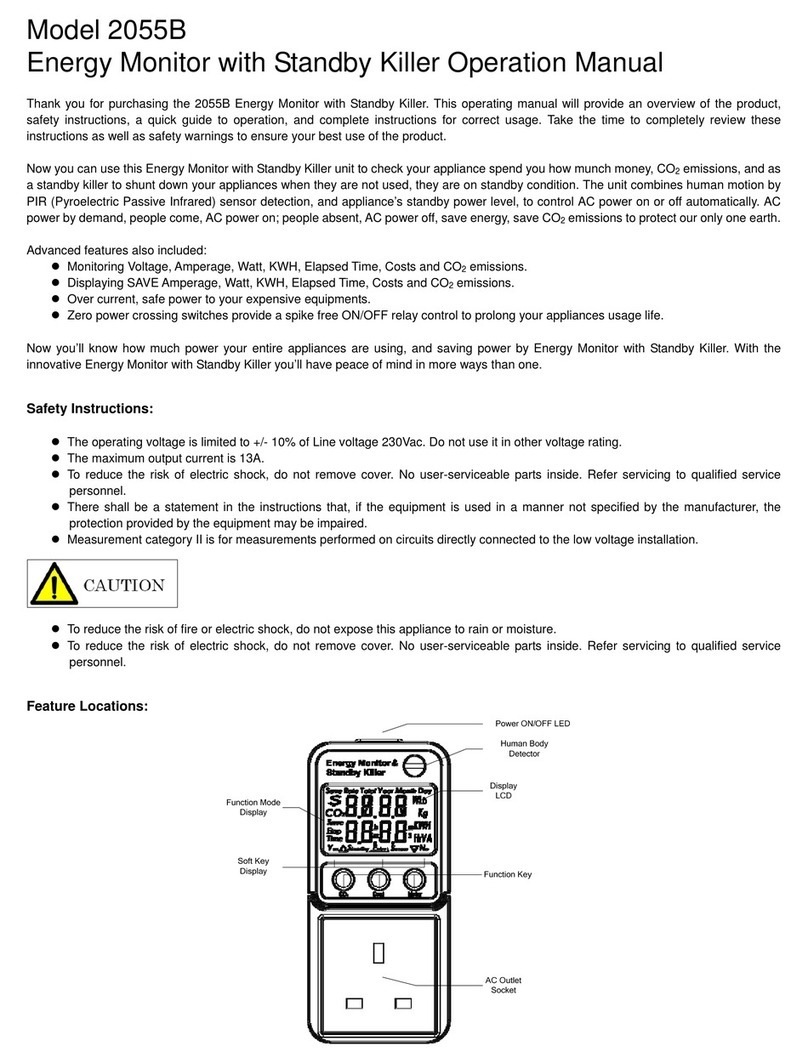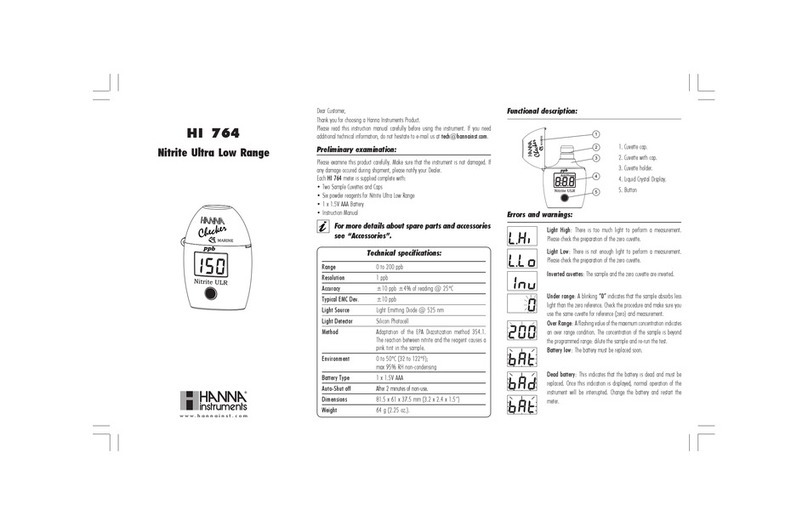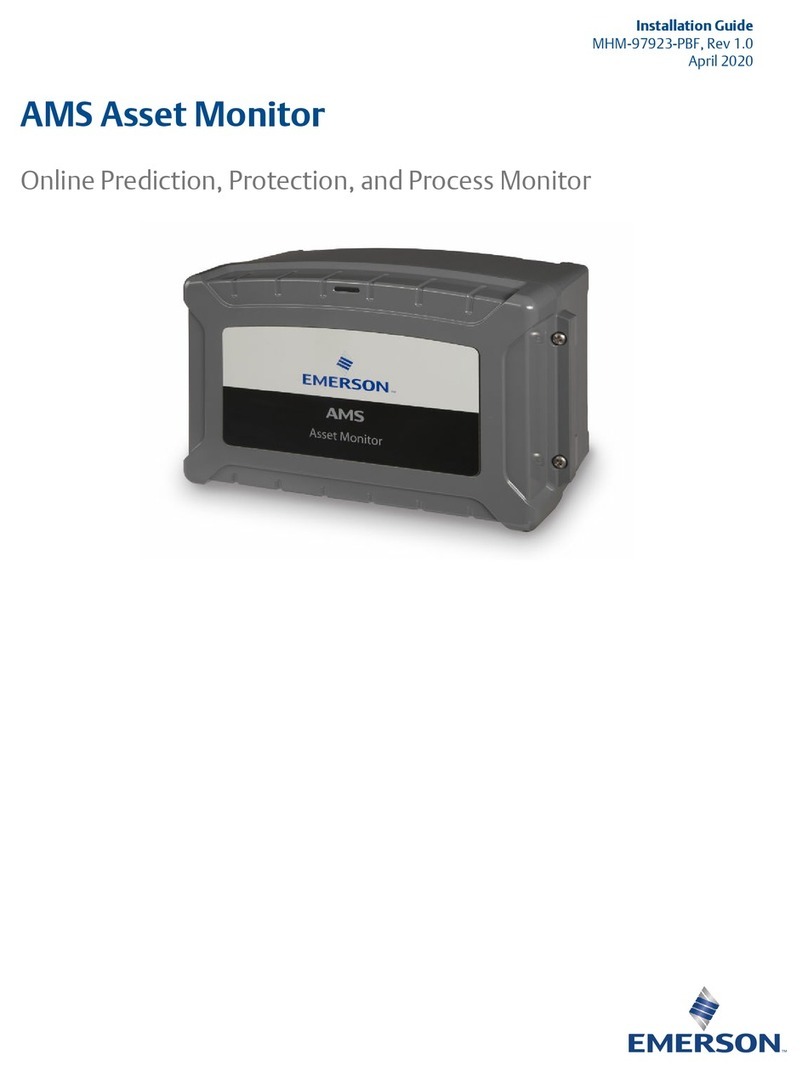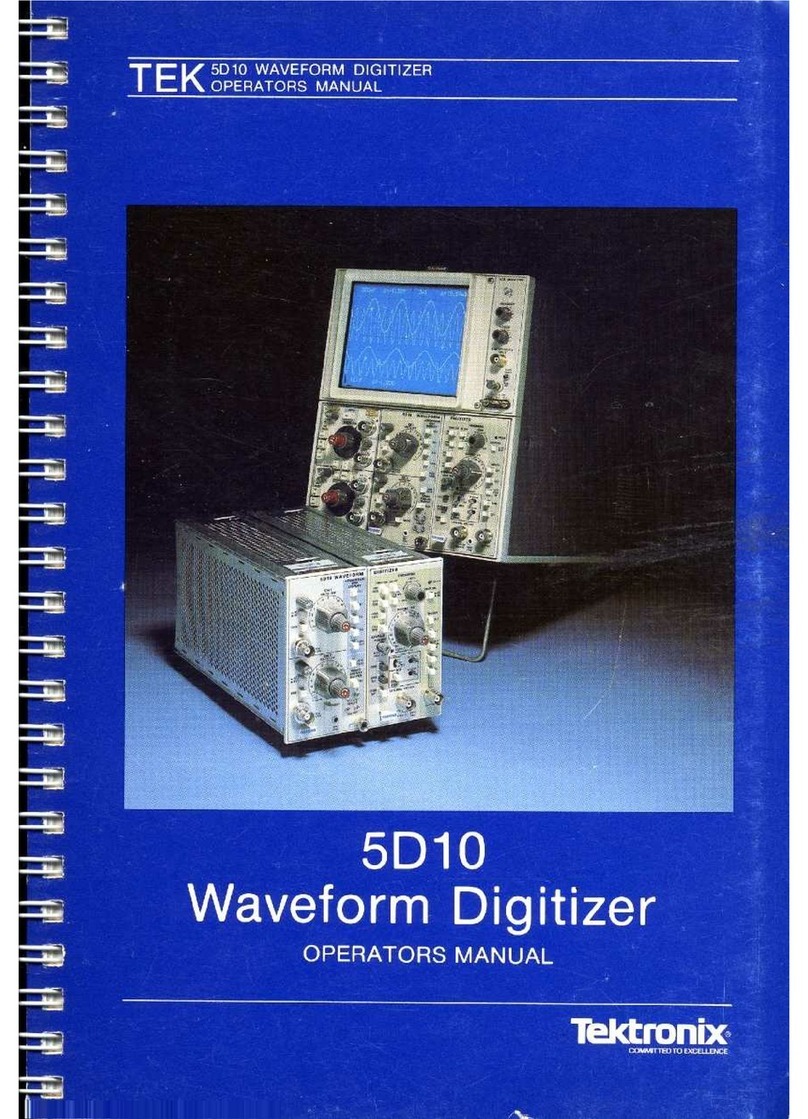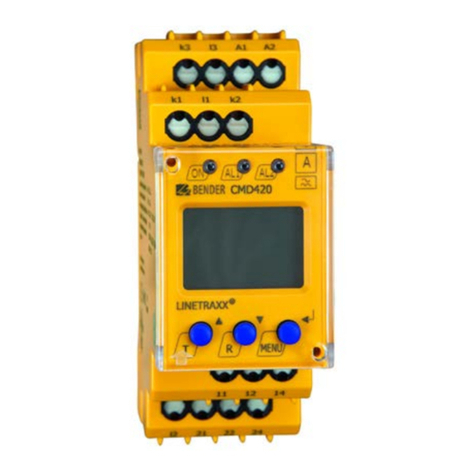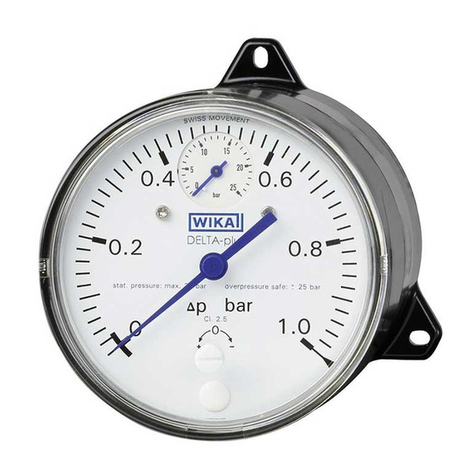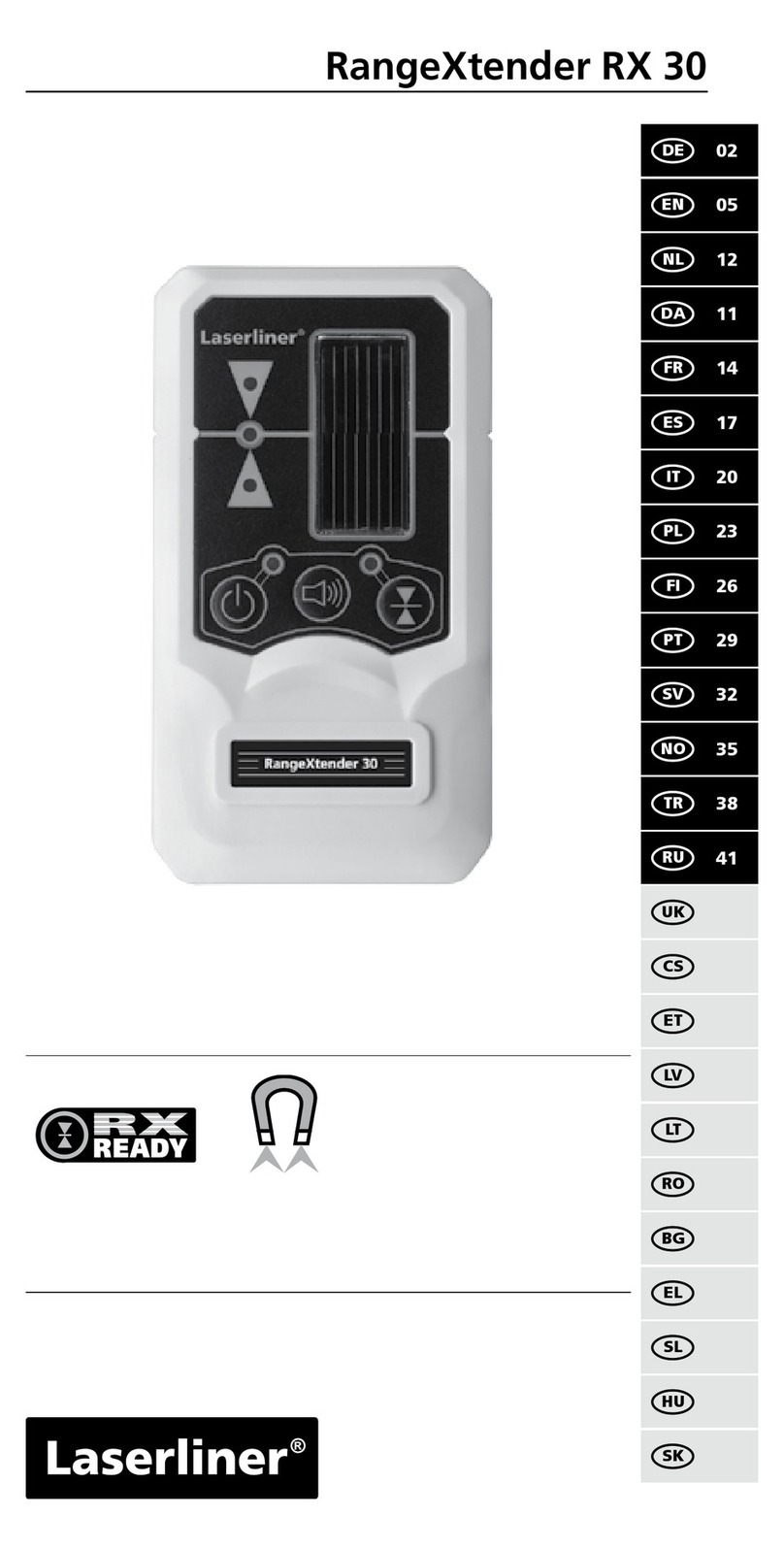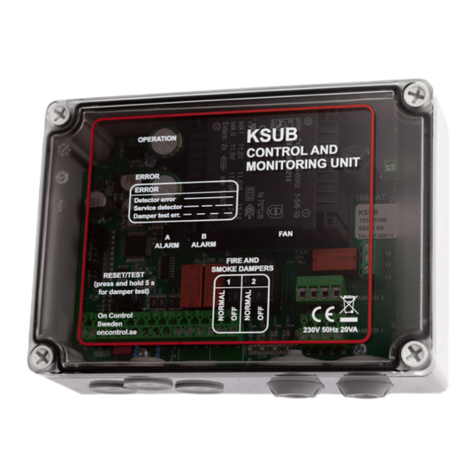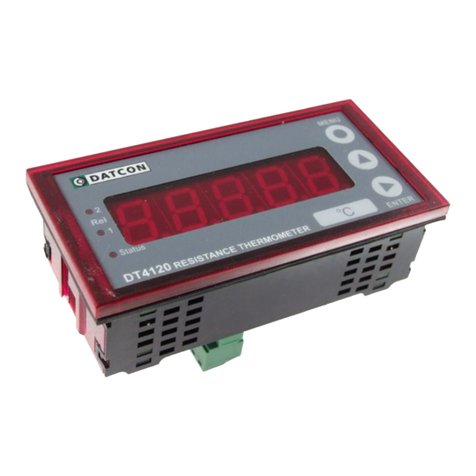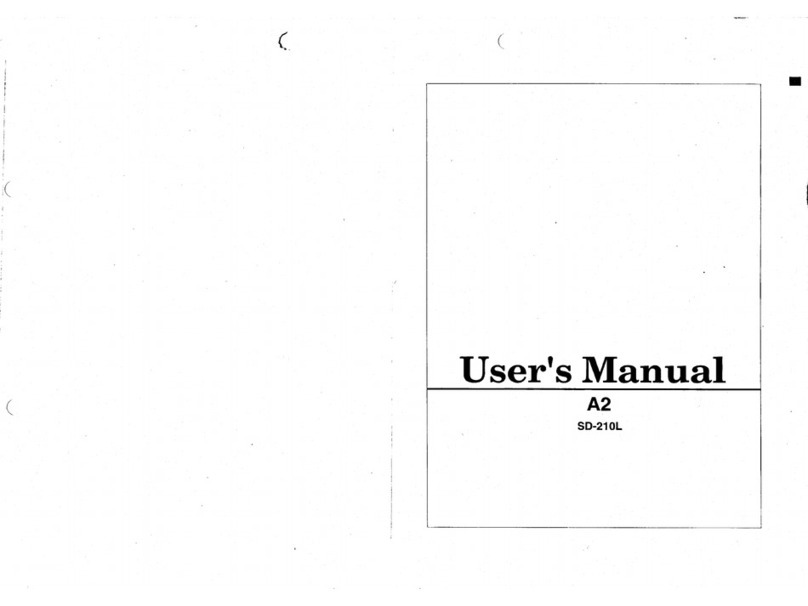AutomationDirect ProSense DPM1-P Series User manual

DPM1-P User Manual, 1st Edition
User Manual - DPM1-P Series Panel Meters
2
UL
CUS
R
In this Chapter...
General Information......................................................................................................3
Package Contents.........................................................................................................3
Recycling Instructions...................................................................................................3
General Safety Considerations ......................................................................................3
Symbols Identification ..................................................................................................3
Maintenance ................................................................................................................4
Technical Support ........................................................................................................4
Agency Certifications....................................................................................................4
Device Description.........................................................................................................5
Dimensions and Mounting............................................................................................6
Installation....................................................................................................................6
Wiring Terminals............................................................................................................7
Input Wiring Diagrams..................................................................................................8
Programming Keys ........................................................................................................9
Configuration.................................................................................................................9
Programming numerical values ..................................................................................10
Input Configuration.....................................................................................................11
Operation Mode Configuration ..................................................................................12
Additional Functions....................................................................................................14
Configuration Lock Out...............................................................................................15
Lock-out menu diagram .............................................................................................16
Output Options............................................................................................................18
Relay Configuration....................................................................................................18
Description of Operation............................................................................................18
Direct access to the relay setpoints value programming.............................................20
Analog output............................................................................................................20
Analog output menu diagram ....................................................................................21
Technical Specifications...............................................................................................22

DPM1-P User Manual, 1st Edition
User Manual - DPM1-P Series Panel Meters
3
General Information
Package Contents
• DPM1-P Series digital panel meter
• Quick start guide
• Mounting panel accessories (a sealing gasket and fixing clip)
• Wiring accessories (plug-in terminal block connectors and 2 key tools for wire insertion)
• Adhesive engineering unit label sheet
Recycling Instructions
This electronic instrument is covered by the 2012/19/UE European Directive so, it is properly
marked with the crossed-out wheeled bin symbol that makes reference to the selective collection
for electrical and electronic equipment which indicates that at the end of its lifetime, the final
user cannot dispose of it as unsorted municipal waste.
In order to protect the environment and in agreement with the European legislation regarding
waste of electrical and electronic equipment from products put on the market after August 13,
2005, the user can give it back, without any cost, to the place where it was acquired to proceed
to its controlled treatment and recycling.
General Safety Considerations
All instructions and guidelines for the installation and manipulation that are present in this
manual must be considered to ensure personal safety and to prevent damage to either the
instrument or any equipment connected to it.
Safety of any equipment incorporated to this instrument is the responsibility of the system
installer.
If this electronic indicator is used in a manner not specified by the manufacturer in this manual,
the protection provided by the instrument may be impaired.
Symbols Identification
Warning: Potential risk of danger.
Read complete instructions when this symbol appears in order to know the potential risk and
know how to avoid it.
Warning: Risk of electric shock.
Instrument protected by double isolation or reinforced isolation.

DPM1-P User Manual, 1st Edition
User Manual - DPM1-P Series Panel Meters
4
Maintenance
To ensure instrument accuracy, it is recommended to check its performance according to the
technical specifications listed in this manual.
For front cover cleaning, just wipe with a damp cloth and neutral soap product. DO NOT USE
SOLVENTS!
Technical Support
We strive to make our manuals the best in the industry. We rely on your feedback to let us
know if we are reaching our goal. If you cannot find the solution to your particular application,
or, if for any reason you need technical assistance, please call us at:
1-800-633-0405
Our technical support group will work with you to answer your questions. They are available
Monday through Friday from 9:00 A.M. to 6:00 P.M. Eastern Time. We also encourage you
to visit our web site where you can find technical and non-technical information about our
products and our company.
www.AutomationDirect.com
Agency Certifications

DPM1-P User Manual, 1st Edition
User Manual - DPM1-P Series Panel Meters
5
Device Description
These models in the ProSense DPM1-P series offer a simple, low cost digital display for
frequency, tachometer, and rate applications. The DPM1-P has a 4-digit 10mm character
height red LED display, accepts input from AC voltage, magnetic sensors, NPN/PNP sensors,
NAMUR sensors, TTL/24V encoders, or switched contacts, and provides selectable sensor
excitation voltages. The meter is powered from an external AC or DC power supply. The
1/32 DIN housing takes up minimal panel space and the meter face has an IP65 rating.
Configuration parameters can be locked out to prevent unauthorized or accidental changes to
the meter’s operation. ProSense digital panel meters are backed by a 3 year warranty.
• 48 x 24mm 1/32 DIN
• 4 digit (0 to 9999) red LED display
• Frequency/Tachometer/Rate Modes
- AC voltage
- Magnetic sensor
- NAMUR sensor
- NPN/PNP sensor
- TTL/24V encoder
- Switched contact
• Selectable decimal point
• AC or DC powered
• Sensor excitation voltage
• Direct or reverse scaling in Rate mode
• Total configuration lock out

DPM1-P User Manual, 1st Edition
User Manual - DPM1-P Series Panel Meters
6
Dimensions and Mounting
Fixing clip
Sealing gasket
DPM1 Meter
Panel mounting surface
Dimensions mm [in]
Installation
To install the meter, prepare a 45mm x 22mm panel cut-out and slide the unit inwards making
sure to place the sealing gasket between the front side
panel and the front bezel.
While holding the unit in place, put the fixing clip
around the case and slide it until it reaches the panel
at the rear side.
Press slightly to fasten the clips to the latching slots
on the case and get the unit fully assembled and close
fitted to achieve a good seal.
To remove the meter from the panel, pull the rear fixing clips latching tabs outwards until they
are disengaged, then slide the fixing clips back over the case.
Installation
Dimensions 48 x 24 x 125.1mm (1/32 DIN)
Panel Cutout 45 x 22mm
(Max. panel thickness 7mm)
Case Material Polycarbonate UL 94 V-0

DPM1-P User Manual, 1st Edition
User Manual - DPM1-P Series Panel Meters
7
Wiring Terminals
CN3
Analog
Output
1 -0/4-20mA
2 +0/4-20mA
CN2 and CN3 Terminals CN1, CN4 and CN5 Terminals
CN1
AC
Supply DC
Supply
1 Line 1 -VDC
2 Neutral 2 +VDC
CN4
Relay 1
1N.O. Contact
2
CN5
Relay 2
1N.O. Contact
2
CN3
CN1
CN5
CN4
CN2
1
2
11
12
2 2
125 34
Terminals
Connector CN1 CN2 CN3 CN4 CN5
Wire cross section 0.08 to 2.5mm²
(28 to 12 AWG)
0.08 to 0.5mm²
(28 to 20 AWG)
0.08 to 0.5mm²
(28 to 20 AWG)
0.08 to 2.5mm²
(28 to 12 AWG)
0.08 to 2.5mm²
(28 to 12 AWG)
Strip length 8 to 9mm 5 to 6mm 5 to 6mm 8 to 9mm 8 to 9mm
Manufacturer Wago 231-
202/026-000 Wago 733-105 Wago 733-102 Wago 231-
102/026-000
Wago 231-
302/026-000
Cage clamp
connection
Insertion tool or
screwdriver with
0.5 mm x 3.0 mm
blade
Insertion tool or
screwdriver with
0.3 mm x 1.8 mm
blade
Insertion tool or
screwdriver with
0.3 mm x 1.8 mm
blade
Insertion tool or
screwdriver with
0.5 mm x 3.0 mm
blade
Insertion tool or
screwdriver with
0.5 mm x 3.0 mm
blade
Insertion Tool (included with meter)
Insert wires into the proper terminal
while using the insertion tool to open
the clip inside the connector. Release
the insertion tool to fix wire to the
terminal.
Insertion Tool (included with meter)
Insert wires into the proper terminal
while using the insertion tool to open
the clip inside the connector. Release
the insertion tool to fix wire to the
terminal.
CN2
Signal Input
110 - 600 VAC
2Not used
3+ Input pulses
4Common
5+ Excitation (5, 8, 12V) @
60mA

DPM1-P User Manual, 1st Edition
User Manual - DPM1-P Series Panel Meters
8
Refer to the instructions in this manual to preserve safety protections.
WARNING: If this instrument is not installed and used in accordance with these
instructions, the protection provided against hazards may be impaired.
To meet the requirements of EN 61010-1 standard, where the unit is permanently connected to
main supply, it is obligatory to install a circuit breaking device easily reachable by the operator
and clearly marked as the disconnecting device.
To guarantee electromagnetic compatibility, the following guidelines should be kept in mind:
• Power supply wires should be separately routed from signal wires and never run in the same conduit.
• Use shielded cable for signal wiring.
• Cables section should be ≥0.25 mm².
Before connecting signal wires, signal type and input range should be verified to be within the
right limits. Do not connect simultaneously more than one input signal to the meter.
Input Wiring Diagrams
10-600V AC Input
5 4 3 2 1
CN2
Switched contac
t
5 4 3 2 1
CN2
5 4 3 2 1
CN2
TTL/24V DC Encoder input
+ Exc.
+ Pulses (Out)
Common
NPN / PNP / PWM sensors
NAMUR sensor
5 4 3 2 1
CN2
+ Exc.
+ Pulses (Out)
Common
5 4 3 2 1
CN2
+ Exc.
+ Pulses (Out)
5 4 3 2 1
CN2
Magnetic sensor

DPM1-P User Manual, 1st Edition
User Manual - DPM1-P Series Panel Meters
9
Programming Keys
ENTER: Enters configuration and
validates data and parameters.
UP: Increases value of blinking digit in configuration
mode.
SHIFT: Selects mode or shifts blinking digit in
configuration.
(Bottom View)
Configuration
When the power is applied to the meter, a display test begins automatically to check the function
of the LED’s and digits. Once this test is finished the display shows the internal software version
and then the unit goes to RUN mode.
Configuration follows a structure composed of a number of menus and submenus. By pressing
the ENTER key for <3 seconds, the main menu level is entered and the display will show “Pro”.
Pressing the SHIFT key provides access to the programming menu level which includes menus
for input configuration (InP), display configuration (dSP), relay configuration if present (SEt),
analog output configuration if present (A.out). Press ENTER to access the submenus under
each programming menu.
If configuration has been totally locked-out, when pressing ENTER to access the main menu
level, the display shows dAtA instead of Pro. This indicates that it is only possible to see
programmed information and that it is not allowed to modify any parameter from the entire
configuration. In this visualization mode, the meter automatically switches back to RUN mode
after 15 seconds from the last key press.
Run Mode
(¹) If parameter lock out has been enabled, dAtA will
be displayed instead of Pro
<3sec >3sec <3sec
Enters configuration
menu (non-locked
out parameters).¹
Enters lock
out menu.
Displays detected maximum and
minimum values. Value RESET can
be done by pressing at least 3 sec.
(then new maximum or minimum
value is displayed).²
(²) Additional information provided later in this User Manual
The progress through the programming routines is done by pressing ENTER key. In general,
push SHIFT key a certain number of times to select an option and push ENTER key to validate
the change and move forward to the next step of the program.

DPM1-P User Manual, 1st Edition
User Manual - DPM1-P Series Panel Meters
10
Programming numerical values
When the parameter is a numerical value, the display will show the first of the digit to be
programmed blinking.
Digit selecting: Press repeatedly the SHIFT key to shift from left to right over all the display
digits.
Changing the digit value: Press repeatedly the UP key to increase the value of blinking digit
until it has the desired value.
The minus sign is programmed depending on the variable type. A variable that represents the
value of an input will be able to take a value in the range 0 to 9999, without taking into account
the decimal point. When a digit is selected it shows values from (0) to (9), and then (-1), (-), and
comes back to show values from 0 to 9. A variable that represents a display value will be able to
take a value in the range 0 to 9999, without taking into account the decimal point.
Completion of each submenu routine returns the meter to Pro mode. To save data entered or
changed during configuration press the ENTER key while in Pro mode. Stor will be displayed
for a few seconds while all of the configuration data is stored in memory. The meter will then
return to RUN mode.

DPM1-P User Manual, 1st Edition
User Manual - DPM1-P Series Panel Meters
11
Input Configuration
The figure below shows the input configuration menu.
INPUT TYPES
1 10-600 V
2 Magnetic sensor
3 NAMUR
4 PNP / PWM
5 NPN / PWM
6 TTL/24 V DC / Encoder
7 Switched contact
5 6 7
E
12 U 8 U 5 U
Pro
InP ModE SEt
1 2 3 4
Operation
mode config.
Setpoints
configuration
Stor
Pro
A.out
Analog output
configuration
(0/4-20mA)
1
Select Excitation Voltage 12V, 8V or 5V
Select
Input
Type
ENTER: Enters configuration and
validates data and parameters.
UP: Increases value of blinking digit in configuration
mode.
SHIFT: Selects mode or shifts blinking digit in
configuration.
(Bottom View)
Programming Keys
(Bottom View)

DPM1-P User Manual, 1st Edition
User Manual - DPM1-P Series Panel Meters
12
Operation Mode Configuration
ModE
invdir
PPr
8888
1
rAtEtAC
dCP
FrEC
0.1
dCP
dSP1
inP1
8888
88.8.8
8.8.8.8
8888
88
8.8
T.Lim
t.Avr
Pro
0.01
1 0.1
Selección posición
punto decimal
Pulsos por
revolución
Frecuencia de
entrada
Punto decimal de la
frecuencia de
entrada
Indicación deseada
para esta frecuencia
de entrada
Posición punto
decimal
Selección
nivel de brillo
de 1 a 4
Tiempo de promediado
de las lecturas
Desde 0.0 a 9.9
segundos
Tiempo límite de espera
llegada pulsos
Desde 1 a 99 segundos
El t.Avr (tiempo de promediado) debe
ser inferior al t.LIM (tiempo límite)
>3s
No
Selección
posición punto
decimal de las
r.p.m.
br 1 br 2 br 3 br 4
Lin
dSP1
inP1
8888
88.8.8
8888
dSP2
inP2
8888
8888
duty
dSP1
inP1
888.8
8888
dSP2
inP2
888.8
8888
Frecuencia de
entrada
Indicación deseada
para esta frecuencia
de entrada
Ciclo de trabajo de
entrada
Indicación deseada
para este ciclo de
trabajo de entrada
Ciclo de trabajo de
entrada
Indicación deseada
para este ciclo de
trabajo de entrada
8.8.8.8 8.8.8.8
8.8
t.Avr
Pro
Selección
nivel de brillo
de 1 a 4
Tiempo de promediado
de las lecturas
Desde 0.0 a 9.9
segundos
>3s
No
br 1 br 2 br 3 br 4
88
T.Lim Tiempo límite de espera
llegada pulsos
Desde 1 a 99 segundos
Operation mode selection
(PWM Function)
Selection of decimal
point position Pulses per
revolution
Selection of
r.p.m. decimal
point position
Input
Frequency 1
Decimal point
of input
frequency 1
Desired display for
input frequency 1
Decimal point
position
Input
frequency 2
Desired display for
input frequency 2
Brightness
selection
from 1 to 4
T.Avr (average measurement time)
must be less than T.Lim (time limit)
Average
measurement
time of readings
From 0.0 to 9.9s
Time limit waiting for
input pulses.
From 1 to 99s
Brightness
selection
from 1 to 4
Time limit waiting for
input pulses.
From 1 to 99s
Average
measurement
time of readings
From 0.0 to 9.9s
Desired display for
input 2duty cycle
Input 2 duty cycle %
Desired display for
input 1duty cycle
Input 1 duty cycle %

DPM1-P User Manual, 1st Edition
User Manual - DPM1-P Series Panel Meters
13
To use the meter to display frequency select the “FrEC” operation mode.
In tachometer mode “tAC” speed is always displayed in rpm based on the specified number of
pulses per revolution from the sensor.
In rate mode “rAtE”display scaling is possible from an input value given in pulses per second
(input frequency) to configure a display-frequency ratio reading in engineering units. If
increasing frequency must result in an increasing display then “dir” (direct proportional
variation) must be selected. Select “inV” (reverse proportional variation) if increasing
frequency must result in a decreasing display.
In the “duty” configuration, the meter is able
to present a display proportional to the cyclic
relationship of the input signal (t on / t off ).
The programming sequence is similar to that of
any analog input, introducing a pair of values for
the input (InP1 and InP2) to which correspond
a pair of display values (dSP1 and dSP2).
InP1 = Ton / toff value in point 1
(programmable from 0 to 100.0%) dSP1 =
Display value for point 1 (programmable from 0
to 9999 plus decimal point position)
InP2 = Value of ton / toff in point 2
(programmable from 0 to 100.0%) dSP2 =
Display value for point 2 (programmable from 0
to 9999)
Modulation of the cyclical relationship (duty cycle)
0% Duty Cycle
100% Duty Cycle

DPM1-P User Manual, 1st Edition
User Manual - DPM1-P Series Panel Meters
14
Additional Functions
MAX/MIN function
With the meter in RUN mode: Activated after pressing the SHIFT key for less than 3 seconds.
From RUN mode, a press shows the maximum value read by the meter since the last time it has
been switched on, unless a RESET MAX/MIN is done, the display will alternate between “Hi”
and the maximum stored value. With a second press the display will alternate between “Lo” and
the minimum stored value. A third press brings the meter back to RUN mode.
Reset MAX/MIN
While the meter shows the peak value (MAX), pressing the SHIFT key for 3 seconds will
produce a reset of the value. Pressing SHIFT key for 3 seconds while the meter shows the valley
value (MIN) will produce a reset of the value.
Configuration Lockout
In mode RUN if the ENTER key is pressed for 3 seconds, the meter will show the indication
CodE, and following 0000, allowing the user to introduce the security code. If the code that
has been introduced is wrong, the meter will go back to RUN mode, if it is correct, it will
allow the access to the security menu. See section detailing Configuration Lockout.
Return to Factory Configuration
From RUN mode press the ENTER key for less than 3 seconds to access Pro programming
mode. Now press the UP key for more than 3 seconds to allow entering the numeric code to
reset the meter to factory configuration parameters. This code is 74. When entering this code
the meter shows the LoAdIng dEFAuLt ConFIGurAtIon, and then StorE, which means
that they have been stored in the non volatile memory of the meter.
>3sec
Run Mode
<3sec Programming Mode
If parameter lock out has been enabled, dAtA
will be displayed instread of Pro
Enter code 74
Save value
Run Mode

DPM1-P User Manual, 1st Edition
User Manual - DPM1-P Series Panel Meters
15
Direct Access to Relay Setpoints
The meter allows direct access to the programming of the relay setpoint values. After accessing
programming mode, Pro, pressing the UP key provides access to each relay setpoint value.
.
.
Relay 1 setpoint
Enter setpoint of 20.0 for
this example
Relay 2 setpoint
Enter setpoint of 80.0 for
this example
Save values
Run Mode
<3 sec.
Programming Mode
Run Mode
Configuration Lock Out
The meter is delivered with the programming not locked out, giving access to all the
programming levels. Once completed the meter programming the following security measures
are recommended:
1. Lock out the programming access to prevent from programmed parameters modifications.
2. Lock out Key Pad functions to prevent from accidental modifications.
3. There are two lockout modes: selective and total. If the parameters are going to be readjusted
frequently, make a selective lockout. If no adjustment is going to be made, make a total
lockout. Key Pad functions lockout is always possible.
4. The access to the lockout routine is allowed by entering a personalized code. If the code set at
factory is changed, be sure to write down your personalized code and keep it in a safe place.

DPM1-P User Manual, 1st Edition
User Manual - DPM1-P Series Panel Meters
16
TOTAL LOCKOUT
The access to the programming routines to read data is allowed even if all parameters are locked
out ALL=Yes, but it will not be possible to enter or modify data. In this case, when entering
in the programming mode, the display shows the indication “-dAtA-”.
PARTIAL LOCKOUT
When only some parameters are locked out, all configuration data can be read but only non
protected parameters can be modified. In such case, when entering in the programming
mode, the display shows the indication -Pro- “.
Menus or submenus that can be locked out are:
• Relay 1 Configuration (C.SP.1).
• Relay 2 Configuration (C.SP.2).
• Relay 1 Setpoint Value (V.SP.1).
• Relay 2 Setpoint Value (V.SP.2).
• Input configuration (InP).
• Display (dSP).
• Analog output configuration (A.Out). If present in meter.
• Programming of the key TARE (tArE).
Lock-out menu diagram
The following figure shows the lock-out menu. The access to this menu is accomplished from
the run mode by pressing the ENTER key for 3 seconds, until the “CodE” indication appears.
The meter is shipped from factory with the following default code: “0000”. Once this code is
entered, the “CHAn” menu is available to change to a personal code. Write down and keep this
code in a safe place (Do not count on your memory). This personal code makes the default
code useless.
If an incorrect code is entered, the meter will return automatically to the run mode. Total
lockout programming is achieved by changing ALL to Yes. Changing ALL to No will lead to
the selective lockout of the programming variables. Programming each one of the parameters
to 1 will active the lockout, if they are set to 0 programming will be accessible. Though the
programming is locked out, it remains possible to visualize the current programming.
The “Stor” indication informs that the modifications effectuated have been stored correctly.

DPM1-P User Manual, 1st Edition
User Manual - DPM1-P Series Panel Meters
17
inP
..
..
..
..
.
Enter secret code to access this routine (default code is 0000).
If secret code is forgotten, proceed to load default configuration
to have access to lock-out configuration again.
Previous settings will be lost.
Allows to change secret code
selecting 'YES'
Total lock-out of parameters
Menu partial lock-out.
0= unlocked
1= locked-out
Mode menu lock-out
SETPOINT1 menu lock-out
SETPOINT2 menu lock-out
SETPOINT1 value menu lock-out
SETPOINT2 value menu lock-out
Serial output menu lock-out
.
Analog output menu lock-out.
(only appears if ANAP is installed. Only
in this case serial output menu does
not appear).
Run Mode
>3s
ENTER
:
Enters configuration and
validates data and parameters.
UP: Increases value of blinking digit in configuration
mode.
SHIFT: Selects mode or shifts blinking digit in
configuration.
(Bottom View)

DPM1-P User Manual, 1st Edition
User Manual - DPM1-P Series Panel Meters
18
Output Options
All output are optoisolated with respect to input signal and power supply.
Relay Configuration
Introduction
All DPM1-P models are equipped with 2 relays that can provide individual alarm and control
capabilities. Each relay can be configured to function based on independent setpoint values
within the full configured display range, time delay (in seconds), hysteresis (in counts of display)
and selectable HI/LO acting.
Description of Operation
The relay outputs activate when the display value reaches the corresponding programmed relay
setpoint value. The following relay operational parameters must also be set:
HI/ LO ACTING MODE.
In HI mode, the output activates when the display value exceeds the setpoint level and in LO
mode, the output activates when the display value falls below the setpoint
PROGRAMMABLE TIME DELAY or HYSTERESIS.
Each output action can be deferred by a programmable time delay or hysteresis level.
The time delay is the time that takes the output to activate after passing through the setpoint in
the up or down direction, while the hysteresis band will be selected asymmetrical i.e. only acts
on the output deactivation edge. The delay is programmable in seconds, from 0 to 99.
The hysteresis can be programmed, in counts, within the full display range. The decimal point
appears in the same position as programmed in the display configuration module.
The figures 1 and 2 show the time delay action (dly) and the hysteresis action (hys) of two
alarms (SET1 and SET2) programmed to activate in HI mode (OUT1) and LO mode (OUT2)
Delay action
Asymmetrical hysteresis
dly
dly dly
dly

DPM1-P User Manual, 1st Edition
User Manual - DPM1-P Series Panel Meters
19
Activating mode selection:
Lo: Low level activation
Hi: High level activation
CnF
dLy HyS
88 8888
Lo Hi
Pro
Setpoint 1 configuration block
Delay / Hysteresis selection
Delay: from 0to 99s
Hysteresis:
From 0000to 9999 points
of display.
Stor
Set
Activating mode selection:
Lo: Low level activation
Hi: High level activation
CnF
dLy HyS
88 8888
Lo Hi
Setpoint 2 configuration block
Delay / Hysteresis selection
Delay: from 0to 99s
Hysteresis:
From 0000to 9999 points
of display.

DPM1-P User Manual, 1st Edition
User Manual - DPM1-P Series Panel Meters
20
Direct access to the relay setpoints value programming
It is possible to directly access the relay setpoint values without the need to go through the
programming menu just by pressing the UP key in Pro mode, as shown in diagram below.
Remember that the decimal point
position is determined by what has
been programmed.
.
.
Relay 1 setpoint
Enter relay 1 setpoint
value
Relay 2 setpoint
Enter relay 2 setpoint
value
Save values
Run Mode
<3 sec.
Programming Mode
Run Mode
Analog output
Introduction
DPM1-P models include an analog output (0/4-20 mA).
The output is opto-isolated with respect to the signal input and the power supply.
The meter provides a two terminal connector [(+ ) and (-)] that drives out a signal variation
from 0-20mA or 4-20mA proportional to a user-defined display range.
The signal can be used to transmit display information to a variety of terminal equipment such
as graphic recorders, controllers, remote displays or other devices that accept input data in
analog form.
The display values producing the full scale output (HI and LO) are introduced via front-panel
buttons in the same programming module. The analog output then follows the display variation
between the HI and LO programmed points.
The output signal can be set up for reverse action by programming the low display for the high
output (HI) and the high display for the low output (LO).
This manual suits for next models
2
Table of contents
Other AutomationDirect Measuring Instrument manuals
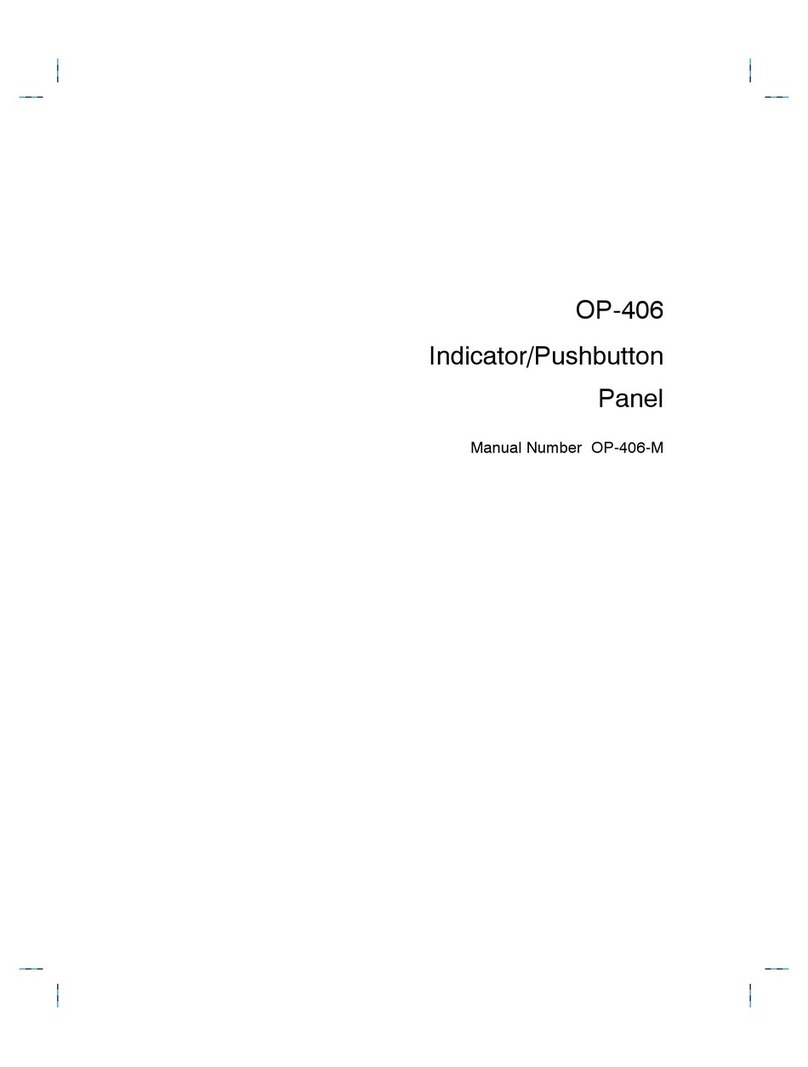
AutomationDirect
AutomationDirect OP-406 User manual

AutomationDirect
AutomationDirect ProSense LPM1 Series User manual
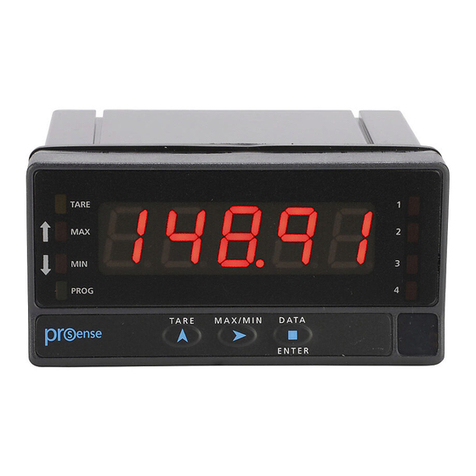
AutomationDirect
AutomationDirect ProSense DPM3 Series User manual
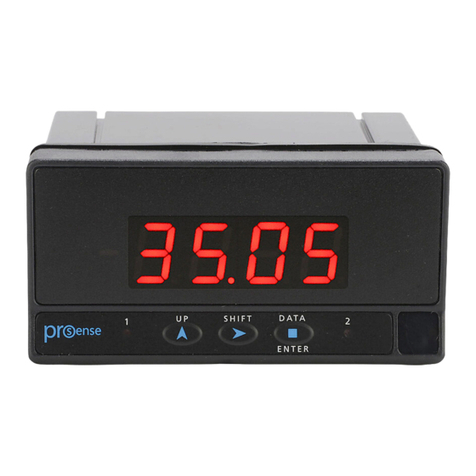
AutomationDirect
AutomationDirect ProSense DPM2 Series User manual
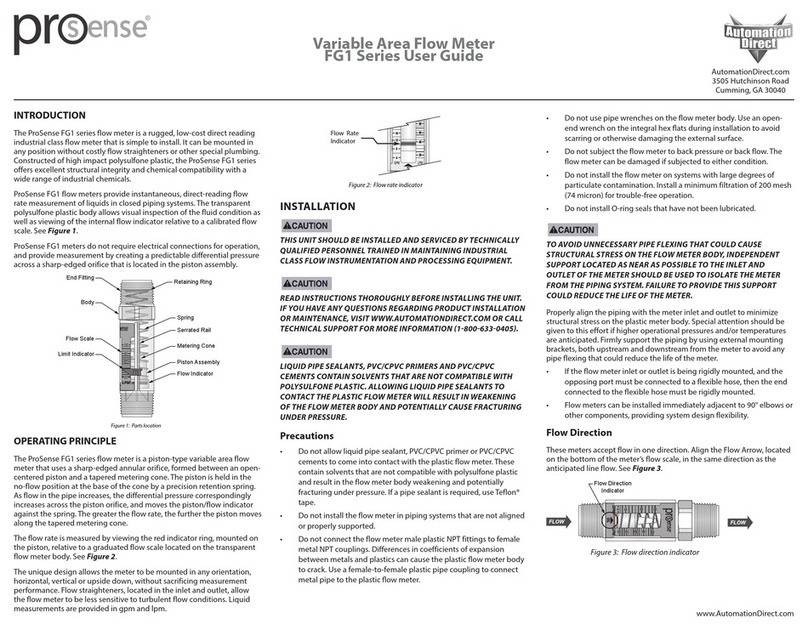
AutomationDirect
AutomationDirect ProSense FG1 Series User manual
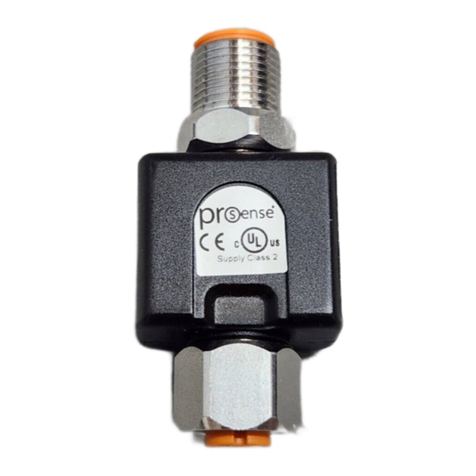
AutomationDirect
AutomationDirect prosense TTD-20-N40160F-H User manual
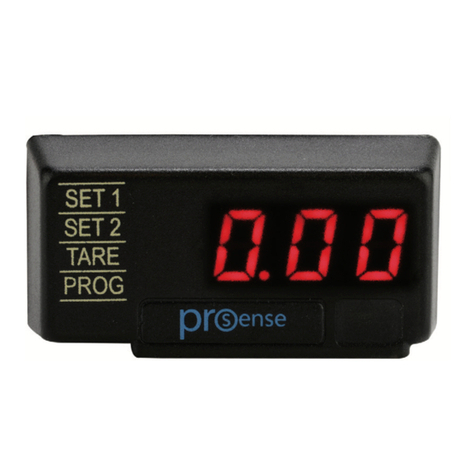
AutomationDirect
AutomationDirect ProSense DPM1 Series User manual
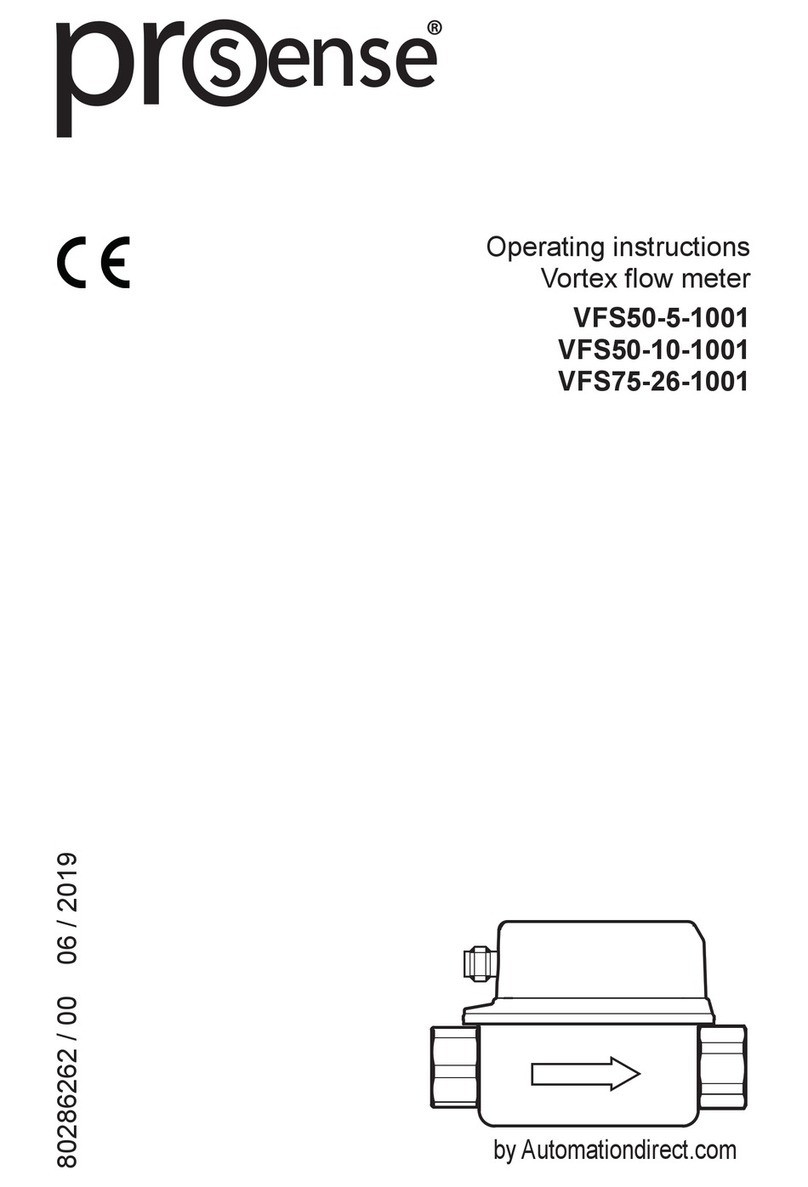
AutomationDirect
AutomationDirect ProSense VFS50-5-1001 User manual
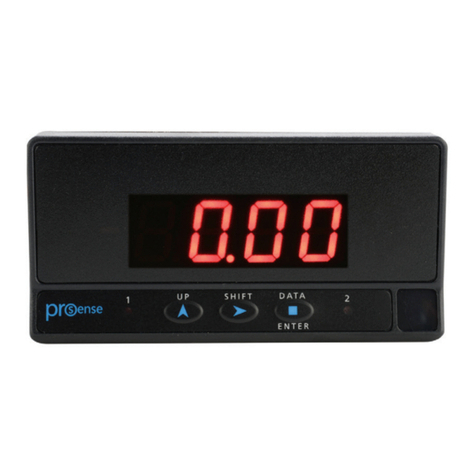
AutomationDirect
AutomationDirect ProSense DPM2-E Series User manual

AutomationDirect
AutomationDirect ProSense DPM3-E Series User manual


